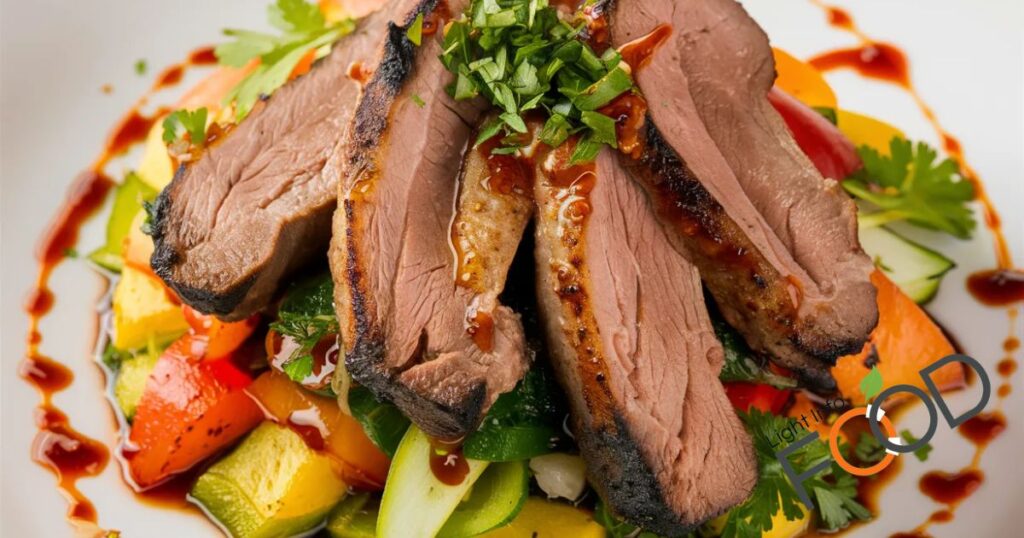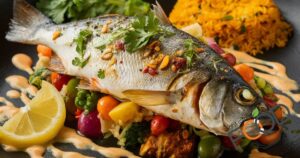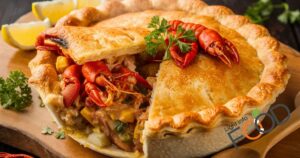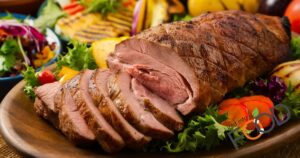Backstrap is a lean and tender cut of meat, typically from venison, that can be cooked in various ways. Here’s a basic recipe for a delicious seared backstrap:
What Is Venison Backstrap?

Location: Backstraps are the long, slender muscles that run along either side of the spine, on top of the ribcage. There are two backstraps per animal.
Qualities: Because these muscles aren’t heavily used for movement, venison backstrap is known for being exceptionally tender and lean. It has very little fat content, contributing to its tenderness but can also dry out if overcooked.
Comparison: Due to its location and quality, think of backstrap as similar to a ribeye roast in beef. However, unlike ribeye which has marbling (fat), backstrap is very lean. Tenderloin, another prized cut, is located underneath the backstrap and spine and is a smaller, even more tender muscle.
The Best Ways To Cook Venison Backstrap?
Venison backstrap is a delicious and lean cut of meat, but it can dry out easily. The key to cooking it perfectly is to use high heat to sear the outside quickly, locking in the moisture. There are two main ways to achieve this: grilling or pan-searing.
For grilling, preheat your grill to high heat and sear the backstrap for a few minutes per side. Then, reduce the heat and cook to your desired doneness. For pan-searing, heat a cast iron skillet over high heat and sear the backstrap on all sides. Then, transfer it to the oven to finish cooking. Whichever method you choose, be sure to use a meat thermometer to check the internal temperature. Medium-rare is ideal for venison backstrap, at around 120-125 degrees Fahrenheit.
How To Cook Venison So It Isn’t Dry?
Venison can be delicious, but it can also get dry if not cooked right. The key is to avoid overcooking. Unlike beef, venison is best enjoyed rare or medium-rare. Use a meat thermometer to check the internal temperature. For steaks, aim for 145°F (63°C) for medium-rare.
For tougher cuts, slow cooking is your friend. Braising or stewing with liquids like broth, wine, or beer helps break down connective tissue and keeps the meat moist and flavorful. Don’t forget to add some fat like olive oil or butter for extra richness.
The Best Way To Cook Venison Backstrap | Roast Or Chops?
Deciding between a roast or chops for your venison backstrap depends on your preference. Roasting is ideal if you want a whole, tender piece of meat. Season it simply and cook it fast for a juicy result.
For a steak-like experience, cut the backstrap into chops. These cook quickly in a pan or on the grill. Don’t overcook venison, aim for medium-rare for the best flavor and texture McGriddle Recipe.
How To Roast Venison Backstrap?
Roasting venison backstrap is a great way to enjoy this delicious lean meat. First, take the backstrap out of the fridge and let it come to room temperature. This helps ensure even cooking. Then, preheat your oven to around 400°F (200°C). Season the backstrap with salt, pepper, and your favorite herbs. You can also get creative with a marinade for extra flavor.
Once seasoned, sear the backstrap in a hot pan with a little oil. This adds a nice browned crust. Then, transfer the pan to the oven and roast until it reaches your desired doneness. Remember, venison is best enjoyed medium-rare, so use a meat thermometer to check the internal temperature (around 140°F or 60°C). Let the roasted backstrap rest for 10 minutes before slicing for a juicy and flavorful meal.
Backstrap Recipe
Course: LunchCuisine: AmericanDifficulty: Easy5
servings1
hour2
hours750
kcal1
hour10
minutesVenison can be delicious, but it can also get dry if not cooked right. The key is to avoid overcooking. Unlike beef, venison is best enjoyed rare or medium-rare. Use a meat thermometer to check the internal temperature. For steaks, aim for 145°F (63°C) for medium-rare.
Ingredients
Venison backstrap
Olive oil
Salt
Pepper
Garlic (optional)
Butter (optional)
Directions
- Prepare the backstrap: Pat the backstrap dry with paper towels. Season generously with salt and pepper on all sides. You can also add other seasonings of your choice.
- Sear the meat: Heat a cast iron skillet over medium-high heat. Add olive oil to coat the bottom of the pan. Once the oil is hot, carefully place the backstrap in the pan. Sear for 2-3 minutes per side, or until a nice crust forms.
- Rest the meat: Once cooked, remove the pan from the heat and transfer the backstrap to a plate. Tent with foil and let it rest for 10-15 minutes. This allows the juices to redistribute throughout the meat, resulting in a more tender and flavorful experience.
- Serve: Slice the backstrap against the grain and serve with your favorite sides. You can also deglaze the pan with some wine or broth to create a simple pan sauce.
Recipe Video
Notes
- Tips:
- For added flavor, you can marinate the backstrap in a mixture of olive oil, herbs, and spices before cooking.
- If using garlic, add it to the pan with the olive oil towards the end of searing the backstrap.
- Baste the backstrap with butter during the last minute of cooking for a richer flavor.
- Use a meat thermometer to ensure the internal temperature reaches your desired level.












